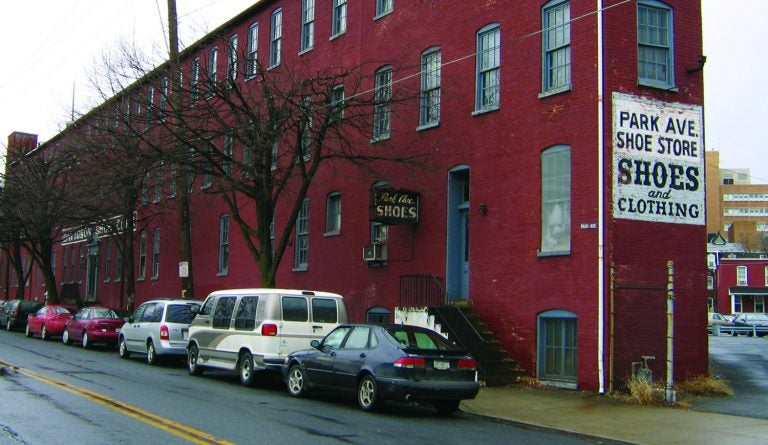How Trump’s tax reform could hurt affordable housing in Pa. cities

The Park Ave. apartments in Lancaster were built using federal Low-Income Housing Tax Credits. (Photo courtesy Pennsylvania Housing Finance Agency)
The Low-Income Housing Tax Credit program relies on high corporate taxes to remain valuable.
Across the United States generally, and Pennsylvania cities specifically, there’s a constant, gnawing issue that worries elected leaders, social service agencies and the poor alike. There’s not enough affordable housing and it often feels like there never will be.
But there would be a lot less affordable housing available if it weren’t for the creation of the Low-Income Housing Tax Credit program in 1986. LIHTC was created during the last major tax reform effort undertaken in this country under President Ronald Reagan.
Now, with the possibility of major tax reform on the horizon once again, this program faces extinction, or perhaps worse, irrelevance.
How it works
Basically, the federal government offers tax credits to developers in exchange for a certain number of units being set aside for low-income tenants. Developers then sell those tax credits to investors for cash, lowering the project’s cost and making affordable units more, well, affordable for the developer.
Each year, the Pennsylvania Housing Finance Agency distributes about $30 million in tax credits, generating about $300 million in housing investment. The program is extremely popular with developers: PHFA usually rejects two in three applications for tax credits because they don’t have enough funds.
And it’s also popular with investors. In Pennsylvania, they usually buy the tax credits from developers for somewhere above 90 cents on the dollar. If a developer is awarded a ten-year tax credit of $1 million and can sell it for 97 cents on the dollar, they would get $9.7 million in cash to put towards the housing development.
Recently, increased interest in the tax credit has driven up the price, with some investors in Pennsylvania buying tax credits for more than the face value. In other parts of the country, developers have been getting as much as $1.20 in cash per dollar of tax credit, according to PHFA.
How that ecosystem could change
The current corporate tax rate of 35 percent is seen by some as a burden to companies and investors. If they can find a way to alleviate that burden with, say, a tax credit, that’s appealing.
But if the corporate tax rate was lower, the burden would be less and the value of the tax credit would be less. On the campaign trail, President-elect Donald Trump talked about lowering the corporate tax rate from 35 percent to 15 percent.
That would be a big hit for the LIHTC. But how big of a hit?
“We just don’t know what corporate tax reform would mean for the tax credit,” said Brian Hudson, executive director of PHFA. “There’s been a lot of over-reaction on this, and I say over-reaction because it’s too soon to know what will happen.”
Hudson says his organization isn’t expecting a proportional drop in value for the tax credits if the corporate tax rate drops. It’s more about what investors are willing to pay and how they decide to value the credit, rather than a specific percentage set by tax reform.
That being said, there’s been some premature panic in the tax credit market. Hudson says developers are seeing investor pay-in rates drop eight to 10 percent, and some investors are pulling out completely from deals that haven’t been signed yet. Others are just moving up deadlines to ensure the ink is dry before Congress has a chance to consider tax reform.
“There’s no talk of eliminating corporate taxes completely, so this program won’t disappear,” said Hudson. “But instead of getting $1 or high 90 [cents on the dollar] we could see that drop. If it gets below 92 or 93 [cents on the dollar], we’d start to get more concerned.”
Pennsylvania won’t be calling for applications for the next round of LIHTC until September, so there’s some time for the dust to settle. But Hudson stresses that, even if tax reform gets traction, there may be no news by then, either — the last comprehensive tax reform took more than two years to complete.
But…could this program go away completely?
A new administration means uncertainty in Washington, D.C. And with Republicans in the White House and dominating Congress, programs like the LIHTC could be on the chopping block.
Phyllis Chamberlain, executive director of the Pennsylvania Housing Alliance, says nothing is certain. But she’s comforted by the LIHTC’s strong track-record of bipartisan support in Washington.
“I can’t stress enough how much support this program has across the aisle,” she said. “It’s just very popular and seen as the best tool we have for creating affordable housing.”
Recently, Senators Maria Cantwell, a Democrat from Washington, and Orrin Hatch, a Republican from Utah, have proposed increasing the program by 50 percent, noting how much interest housing finance agencies have from developers and investors in the program. While that might be a big jump, PHFA is sure they could get rid of an extra $15 million in tax credits really quickly if given the opportunity.
“We’ve had a number of Republicans express that they would be supportive to at least maintain the program where it is,” said Hudson. “So while we take nothing for granted, we’re confident about the future of the program.”
WHYY is your source for fact-based, in-depth journalism and information. As a nonprofit organization, we rely on financial support from readers like you. Please give today.


